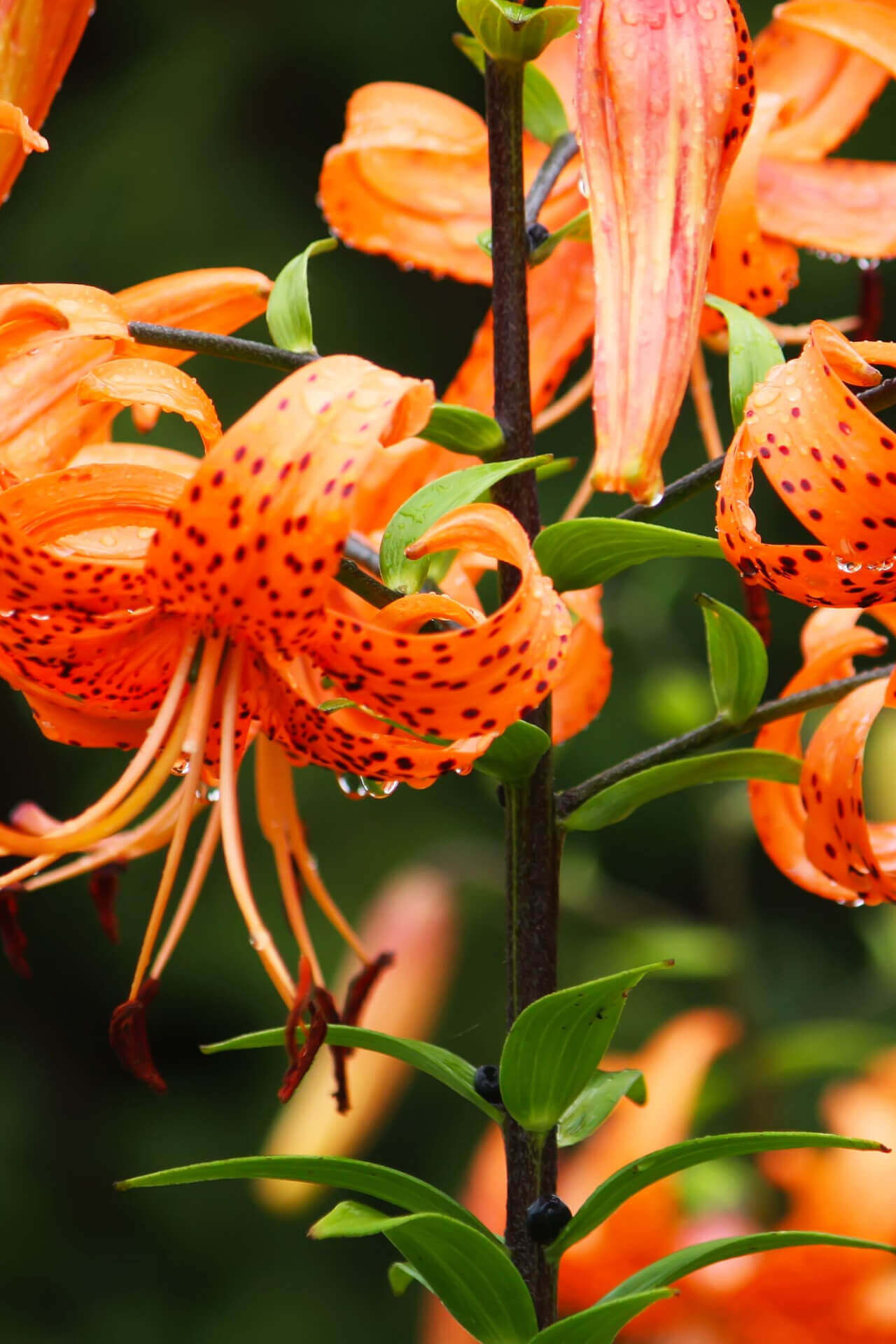Tiger Lily For Sale
Tiger Lily Plants are perennial and super popular due to their exotic upside-down blooms. They have showy flowers that stand tall atop a leggy and leafy stem, reaching 6 feet. Their leaves are rich green in color and produce a glossy sheen while basking in the sun. The flowers emerge as a rich orange with dark brown spots across the petal surface. Their flowers are not only visually beautiful and vibrant, but their texture is thick, supple, and silky, another sensory experience to enjoy. They will be a dazzling addition to your garden.
While originating from China, the Russian Far East, and Korea, the tiger lily (Lilium Lancifolium) has become a favorite among North American gardeners. It is regularly found neatly organized within a garden or as an escapee on road sides across the USA.
Lilium Lancifolium Plant Details
Family: Liliaceae
Hardiness Zones: 3 to 9
Light Requirement: Full sun to partial shade
Water Needs: Moderate
Height: 3 to 5 ft
Spread: 1 ft
Growth Rate: Moderate
Bloom Time: Mid to late summer
Flower Color: Bright orange with dark spots
Wildlife Value: Attractive to pollinators
The Tiger Lily is a perennial plant that reliably flowers year after year. It blooms in mid- to late summer, and due to its height, it makes a great border plant.
These bold perennials grow well in containers and in the garden, making them a versatile option for plant lovers regardless of their living situation. Their robust stems and showy flowers make them ideal cut flowers to add to your perennial bouquet.
Landscape Uses and Maintenance
They prefer moist, well-drained soil. While thriving in full sun, they struggle in dry conditions, so water them regularly. That being said, tiger lilies are highly disease-resistant, making them a great option for beginner gardeners.
Tiger Lilies are best planted in groups of three bulbs in the spring or fall. Grouping them will ensure a dense and impressive display once in bloom. You can consider staking for support if you want them to maintain their upright nature without toppling later in the growth cycle. However, lilies are stem-rotting, and once they fall over, they will continue to grow with a reinvigorated root system wherever their stem touches the ground.
Noteworthy Characteristics
Attractive to pollinators, large orange flowers, and easy to grow. Adding Tiger Lily plants to your garden will make you, and all the pollinators, look forward to the spring. Shop for Tiger Lily plants online at TN Nursery.

Exposure
Tiger Lily (Lilium lancifolium) thrives in full sun to partial shade. For optimal growth and vibrant blooms, ensure it acquires at least 6 hours of direct sunlight daily. It can handle partial shade but may produce fewer flowers in lower light.
Height at Maturity
Over 12"
Usage
Pollinator Plant
Shipped As
Bare-root
Ships
USPS
Planting Zones
3-9




